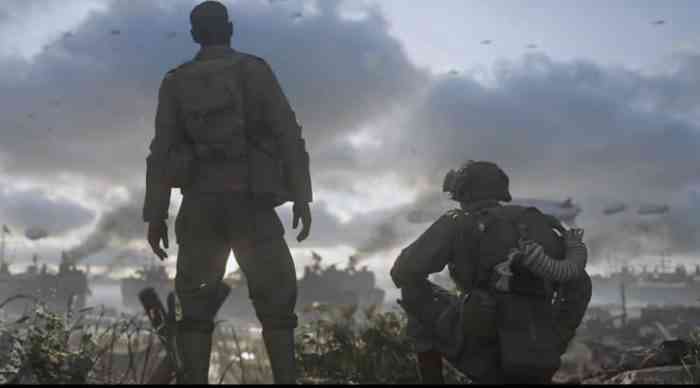10 Call of Duty WWII Facts Your Dad Already Knew
Sledgehammer Games’ historical epic Call of Duty: WWII is one of the best experiences of the year, but even the biggest Call of Duty fan might not know everything about what he or she’s about to play. That’s when it’s time to turn to the elders of the family, to get some extra insight on the awful conflict playing out on screen. These are some little tidbits you might hear, better known as ’10 Call of Duty WWII Facts Your Dad Already Knew’:
1.Standard Allied equipment was more than guns and grenades
It makes sense that the standard infantry soldier would have more than just his weapon, but the sheer amount of what had to be mugged around is staggering. The Army Heritage Center Foundation’s primer on standard issue equipment also includes an“M1923 Cartridge Belt, M1928 Haversack, M1943 Entrenching Tool, M1942 First Aid Pouch for the Carlisle Dressing, and the M1 Bayonet in an M7 Scabbard.” My back hurts just reading that.
2. The codenames for these military operations are badass
A lot of folks talk about the events of World War II in broad terms, but it’s worth learning the individual codenames used during the time. From D-Day to the liberation of Paris was “Operation Overlord.” “Operation Cobra” is the fight through Marigny that Zussman returns from his wounds for in the game. Others include “Operation Goodwood,” “Operation Tiger,” and “Operation Market Garden.” I don’t know about you, but Call of Duty: Overlord sounds way better than CoD: WWII.

3. D-Day was even more horrific than the opening scene shows
It’s hard to truly encapsulate just how much death and destruction awaited those who stormed Normandy’s beaches in June of 1944. Movies have tried, games have tried, but only those who set foot on that sand and lived to tell the tale could truly describe the chaos. Nearly 20,000 soldiers died in these skirmishes alone, and worse still only 4,400 Allied soldiers were even able to be confirmed dead. D-Day is truly one of the lowest points in world history, but it was a major catalyst in taking out the Nazis.
4. Paris was liberated only two and a half months after D-Day
June 6, 1944 marked the invasion of Normandy’s beaches. August 25, 1944 saw the German garrison surrender the French capital after four years of occupation. Two and a half months may sound like a long time by current military standards, but back then it was an impressive show of force for the Allies, and it marked the beginning of the end of Hitler’s reign of terror.
5. Aachen was the first German city captured by the Allies
After barreling through France and liberating town after town, the Allies reached the German border in mid-September of 1944. After a fierce month-long battle Aachen was claimed, and the first German city to fall had been decided. The Germans were completely outmatched in Aachen, their 17,000 soldiers being dwarfed by 100,000 Allied warriors. I’m not sure how the Nazis thought taking on an army ten times the size of theirs was a good idea, but when have Nazis ever shown good judgment?.
Click on through to PAGE 2 for the next points on our list…
